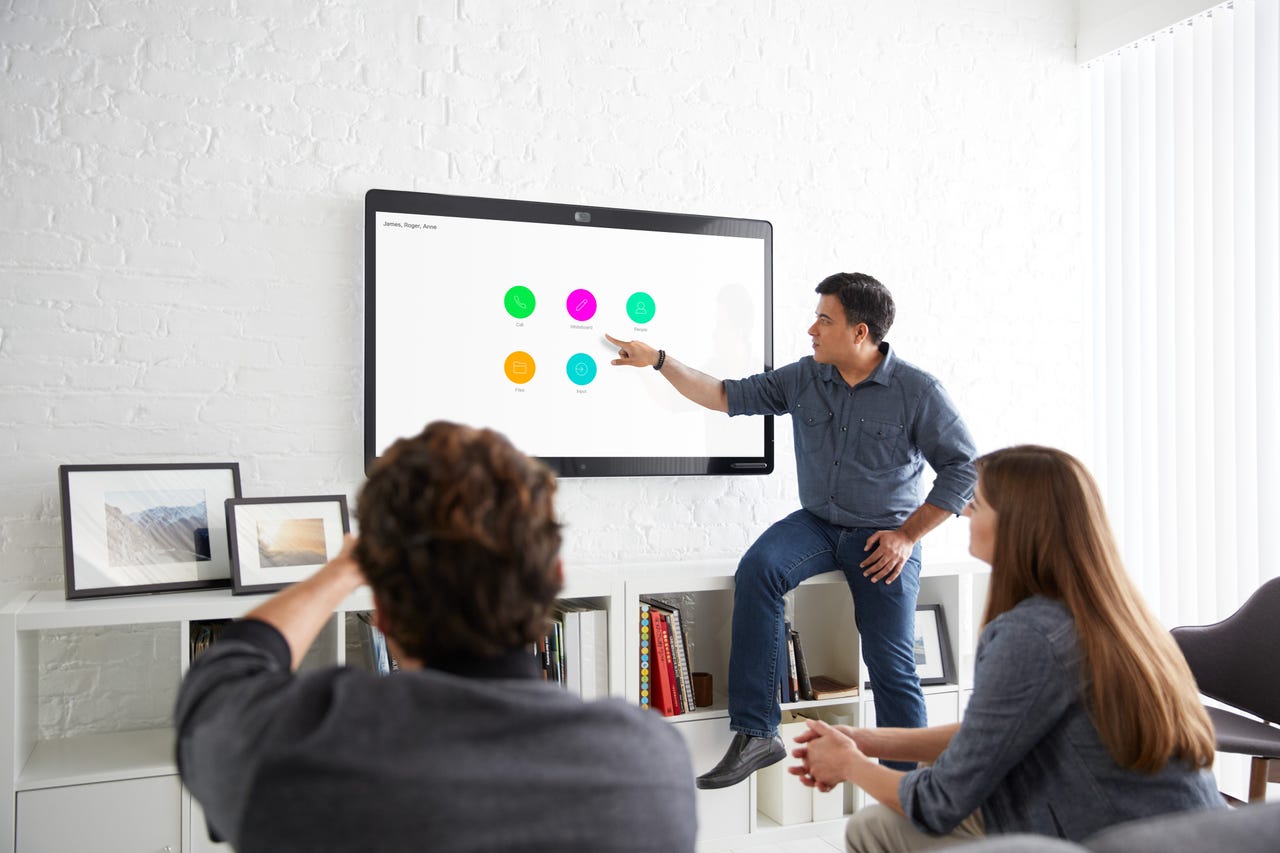Cisco rolls out Spark Board, all-in-one cloud-connected digital whiteboard


The Spark Board is the first video-capable device that Cisco has shipped that's only connected to the cloud.
Corporate conference rooms are filled with collaboration tools that often fall just short of people's needs and expectations. The speaker phone is often hard to hear, and the projector has to be wheeled in from another room. The whiteboard is a simple tool, but there's no way to transfer information off of the board, aside from snapping a picture of it.
Featured
Cisco is trying to solve this problem with the Spark Board, an "all-in-one" digital whiteboard that serves as a projector, whiteboard, and audio-video conferencing tool. The new device is 100 percent cloud-connected, built on an updated Cisco Spark platform. It's the first video-capable device that Cisco has shipped that's only connected to the cloud.
"The challenge with this type of product is it's got to be easy to use -- stuff has to just happen, it's got to be automatic -- for anyone to really use it," Cisco Collaboration CTO Jonathan Rosenberg told ZDNet. While the Spark Board has several functions, ease of use and "magical simplicity" were the primary objectives guiding its design, Rosenberg said.
Its simplicity sets its apart from both legacy systems and new competitors like the Microsoft Surface Hub, Rosenberg said.
Traditional "smart" whiteboards used in conjunction with Cisco video conferencing gear are often difficult to use, while the Spark Board integrates the whiteboard directly into the meeting experience. The Surface Hub, meanwhile, is effectively a PC on the wall, Rosenberg said.
"If I needed a PC on the wall, I'd just project my PC," he said. "The problem we need to solve is how do we make this thing very easy to use?"
The cloud-based Spark Board sounds more like the recently-released Google Jamboard than the Surface Hub, although Cisco says their hardware will be cheaper than both. The 55-inch version of the Spark Board will be available from Cisco partners at the end of this month for a suggested price of $4,990. There's a monthly subscription fee of $199, which covers the cloud service, help desk, and software upgrades. Cisco will make a 70-inch version of the board available later this year. By comparison, the 55-inch Surface Hub model starts at $9,000, while the Jamboard is supposed to sell for under $6,000.
While it'll have to compete with the Jamboard and Surface, Cisco seems convinced there's plenty of room in the market. According to the company's research, just 7 percent of conference rooms worldwide have video conferencing capability. The Spark Board, Rosenberg said, "is a great tool to put in every room because we've priced it for that."
One key feature of the Spark Board is the proximity technology that allows anyone to walk into a conference room and find their Spark app automatically paired to the board. Thanks to its integration to the Spark platform and its ultrasound wireless pairing technology, there's no bluetooth or special wifi or network connection required.
A user just has to hit the "call" button in the app to start a meeting. A meeting participant can "draw" on the Spark Board itself -- it comes with a stylus and supports finger recognition -- or via the "whiteboard" button in the Spark app. Remote users can participate in a meeting and view the board through the app as well.
As with Google applications, all updates on the whiteboard are automatically saved, and users can start and save several new meetings. Anyone with access to a meeting can view the live version of that whiteboard and edit it.
The top of the board has a 12 microphone array, as well as adaptive beamforming to point a mic in the direction of anyone talking. The board has a 4k UHD screen and a fixed lens on top that can capture the whole room.
Cisco secures the board with end-to-end cryptographic techniques. Rather than storing a whiteboard as a jpeg, or as any kind of file, the Spark Board or the app encrypts each whiteboard stroke before it sends it to the cloud, Rosenberg explained.
"If you think about things people draw on whiteboards, it's often the most mission-critical information in the whole company," he said.
Google Jamboard takes on Microsoft Surface Hub: